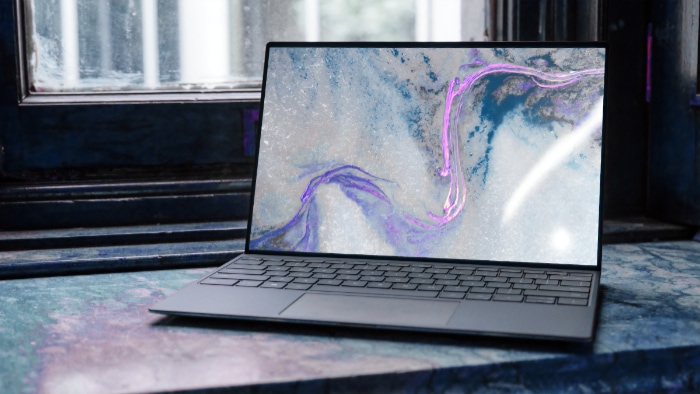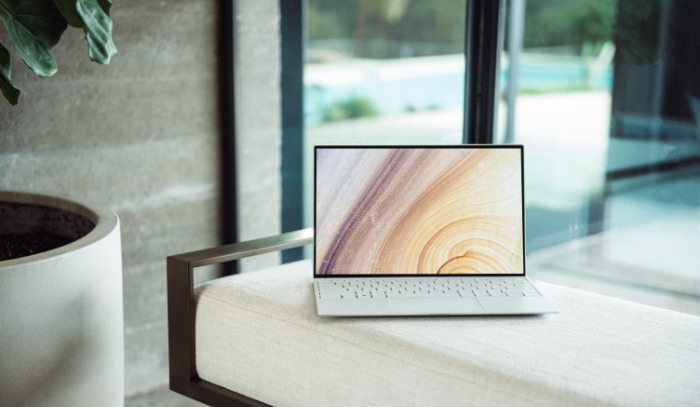How to Measure Laptop Screen Size: Simple Method

Knowing your laptop's screen size is more than just a number; it's key to unlocking its full potential. Whether you're a graphic designer seeking precision, a gamer craving immersive experiences, or a business professional needing clarity and detail, the screen is your window to digital excellence.
Understanding Screen Size Measurement
Screen size is a fundamental feature of any laptop, directly impacting your viewing experience and how you interact with your device. Unlike other measurements, screen size is determined in a specific way, often leading to confusion.
This section will clarify how screen size is measured and highlight the differences between screen and laptop size.
Measuring Diagonally: The Standard Approach
Laptop screens are measured diagonally, from one corner to the opposite corner of the screen. This measurement doesn't include the bezel—the frame around the screen.
Typically, screen size is measured in inches, and this diagonal measurement is what's advertised as the screen size.
Screen Size vs. Laptop Size
It's important to differentiate between the size of the screen and the overall size of the laptop. The latter includes the bezel, keyboard, and other components, making it larger than the screen size.
Therefore, a 15-inch laptop might have a screen size of 14 inches due to the frame around the screen.
Aspect Ratio and Its Role
The aspect ratio of a screen, typically ratios like 16:9, 4:3, or 3:2, describes the relationship between its width and height. It's a crucial factor in understanding screen size as it affects the overall dimensions and area of the screen.
A larger screen with a less common aspect ratio might offer a different viewing experience than a standard aspect ratio screen of the same size.
Tools and Preparation for Measuring
Measuring a laptop screen size accurately requires more than just a good eye; it demands the right tools and preparation. In this part of the guide, we'll explore the essential tools you need and the steps to prepare your laptop for measurement.
This process ensures safety for both you and your device.
Essential Tools for Accurate Measurement
The primary tool needed for measuring your laptop screen is a measuring tape or a ruler. Opt for a flexible measuring tape for ease of use, especially if the screen is not completely flat. Ensure the measuring tool has clear markings in inches or centimeters, depending on your preference.
Preparing Your Laptop
Before you start measuring, it's crucial to prepare your laptop. First, ensure the laptop is powered off to avoid any accidental damage or static electricity.
Position the laptop on a stable, flat surface with good lighting. Open the laptop lid fully so the screen is at a right angle to the keyboard, providing easy access to the entire screen.
Safety Precautions
Taking safety precautions is key to prevent damage to your laptop. Handle your device gently, especially when applying the measuring tape or ruler to the screen.
Avoid pressing down on the screen, as excessive pressure can damage the delicate LCD or LED display. Ensure your hands are clean and dry to avoid leaving smudges or scratches on the screen surface.
Step-by-Step Guide to Measuring the Screen
Accurate measurement of your laptop screen is crucial for a variety of reasons, from purchasing the right accessories to ensuring optimal viewing comfort. This guide provides a detailed, step-by-step approach to measure your laptop screen, ensuring precision and accuracy.
Initial Positioning
- Place Your Laptop: Position your laptop on a flat, stable surface with adequate lighting. Ensure the screen is clean and free from any obstructions.
- Open the Lid: Open the laptop lid to its fullest extent, ideally at a right angle to the base, for easy access to the screen.
Measuring the Screen
- Starting Point: Locate the bottom left corner of the actual display, not the laptop. This is your starting point for measurement.
- Extending the Measuring Tool: Gently extend your measuring tape or ruler diagonally across the screen, aiming for the opposite corner.
- End Point: The end point of your measurement should be the top right corner of the display, avoiding the bezel or frame.
Ensuring Accuracy
- Straight Line Measurement: Keep the measuring tool straight and taut across the screen. Avoid bending or curving it.
- Double-Check Measurements: For accuracy, consider measuring a second time. If both measurements match, you have accurately measured your screen.
- Record the Size: Note down the measurement in inches or centimeters, depending on your preference or requirements.
Special Considerations for Non-Standard Aspect Ratios
- Identify Aspect Ratio: If your laptop has a non-standard aspect ratio, be aware that the screen might be wider or taller than typical screens.
- Measure Width and Height Separately: In such cases, it might be helpful to measure the width and height separately to understand the screen's proportions.
- Consult Manufacturer Specifications: For unique screen shapes or sizes, refer to the manufacturer's specifications for additional details on screen dimensions.
Understanding the Results

After measuring your laptop screen, interpreting the results correctly is essential. This part of the guide explains what the measurements mean and how they relate to your laptop's overall performance and suitability for your needs.
Grasping these details is crucial in making informed decisions about your device.
Interpreting Screen Size Measurement
- Meaning of the Measurement: The diagonal measurement you have obtained is the standard screen size. For instance, a 15.6-inch measurement indicates a screen size commonly referred to as 15.6 inches.
- Screen Size and Viewing Area: This measurement gives you an idea of the viewing area available. A larger screen provides more space for visuals, which can enhance your experience in various applications.
Comparing Across Models and Brands
- Standardization of Measurements: Screen sizes are standardized across the industry, meaning a 13-inch screen from one brand will be similar in size to a 13-inch screen from another.
- Impact of Bezel Size: However, the overall laptop size can differ due to variations in bezel size and design, affecting the device's portability and aesthetics.
Relation to Resolution and Display Quality
- Screen Size vs. Resolution: Screen size does not directly correlate with resolution. A larger screen might not always have a higher resolution.
- Importance of Checking Resolution: For clarity and detail, check the resolution, which is measured in pixels (e.g., 1920×1080, 4K).
- Optimal Use Cases: Depending on your usage, such as gaming or professional graphic design, a balance between screen size and resolution might be necessary for the best experience.
Practical Applications of Knowing Your Screen Size
Understanding your laptop's screen size extends beyond mere measurement; it plays a significant role in optimizing your digital experience. This section highlights the practical benefits and applications of knowing your laptop screen size, demonstrating how this information can be used in various contexts.
Selecting Accessories
- Screen Protectors and Privacy Filters: Knowing the exact screen size is vital when purchasing screen protectors or privacy filters. These accessories need to fit perfectly to be effective.
- Cases and Bags: When buying a carrying case or bag, screen size information helps ensure the laptop fits snugly and is well-protected during transport.
Enhancing Workspace Ergonomics
- Monitor Setups: For those using an external monitor, knowing the laptop screen size helps in creating a harmonious dual-screen setup, ensuring the screens complement each other in size and resolution.
- Desk Space Management: Understanding the screen size can also aid in efficiently organizing your desk space, especially in compact work areas.
Impact on Portability
- Travel and Mobility Considerations: Screen size directly influences the laptop's portability. Larger screens might offer better viewing experiences but can reduce ease of mobility.
- Weight and Form Factor: Typically, a larger screen size correlates with a heavier and larger laptop, which is an important consideration for users who frequently travel or work on the go.
Screen Size and Eye Health
- Viewing Comfort: Larger screens can reduce eye strain, especially for users who spend extended periods on their laptop. They offer more space for larger text and clearer images.
- Distance and Posture: The screen size also impacts how far you should sit from your laptop, affecting your posture and overall comfort during use.
Decision-Making for Purchases
- Balancing Needs and Preferences: Knowing your preferred screen size can guide future laptop purchases, helping you balance your needs for portability, screen quality, and viewing comfort.
- Comparative Analysis: Armed with screen size knowledge, you can more effectively compare laptops, understanding how screen size impacts other features like battery life and performance.
Conclusion
Measuring and comprehending your laptop screen size is a simple yet crucial step in maximizing your digital experience. This guide has walked you through the essentials of measuring your screen, from selecting the right tools to interpreting the results.
With these insights, you can make practical use of your screen size knowledge, whether it's in selecting suitable accessories, optimizing your workspace, or ensuring comfort and efficiency in your daily use. Remember, the screen size impacts more than just the visual aspect; it influences portability, ergonomics, and overall user satisfaction.
By mastering this fundamental aspect of your laptop, you equip yourself with valuable information that enhances your interaction with technology, ensuring that your laptop serves your needs in the most effective way possible.


